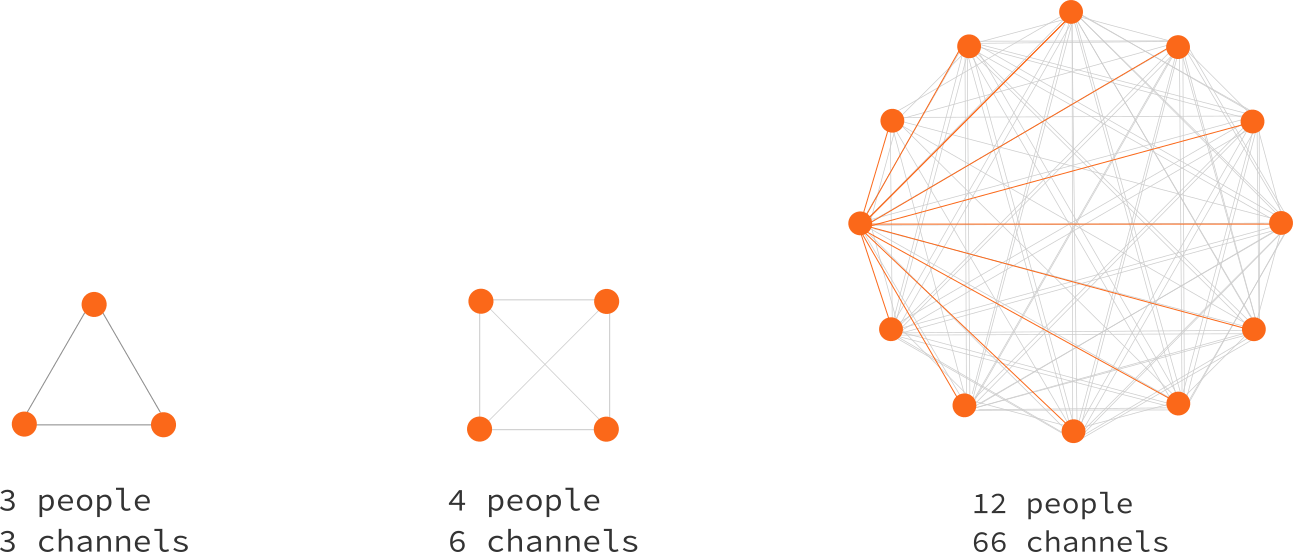“Communication is a sign of dysfunction.”
– Jeff Bezos, via Brad Stone, The Everything Store
Slack is a great way to destroy a workday.
You can lose whole days hammering out details with coworkers across a few Slack threads.
But communication is the cost you pay for capacity—the bigger the team, the greater the costs.
And this is why big teams fail to deliver. As team size approaches the magic number1, team overhead overwhelms its capacity for meaningful work.
🌐 For 𝑛 people, communication costs approach 𝑛²
our research has shown that the number of performance problems a team encounters increases exponentially as team size increases.
– J. Richard Hackman, Leading Teams: Setting the Stage for Great Performances
The cost of shooting off a Slack message is darn near zero.
But multiplying that cost by each person on your team adds up. And for each new person, you don’t add one connection—you add a connection for each person on the team.
In his 1975 book The Mythical Man-Month, author Fred Brooks formulates the communication costs of adding a new team member—a triangle number: 𝑛(𝑛-1)/2
The situation devolves quickly:
- Three people: 3 connections
- Four people: 6 connections
- 12 people: 66 connections
- 150 people: 11,175 connections
Metcalfe’s Law, originally intended to describe the value of communication networks, also describes connections among team members: the number of connections in a network is proportional to the square of the number of connected users of the system.

🍕 The mythical two-pizza team
Oversimplifying outrageously, we state Brooks’s Law: Adding manpower to a late software project makes it later.
– Fred Brooks, The Mythical Man-Month
Amazon uses the two-pizza team rule.
The intention is that the ideal team is small enough to feed with two pizzas—a highly variable measure. But a more straightforward way to say this is: about ten people.
🐉 Here be dragons.
Max limits on team size only thwart communication problems when teams are autonomous.
Cross-team dependencies obfuscate lines of communication. If teams are interdependent, they’ll still need to communicate. Regardless of what the org chart says, when two or more two-pizza teams depend on each other: you’ve got a bogged-down MegaTeam™.
Only small, independent teams with the power to build and deploy software can avoid the scourge of communication overhead.
7±2 per Miller’s Law↩︎
